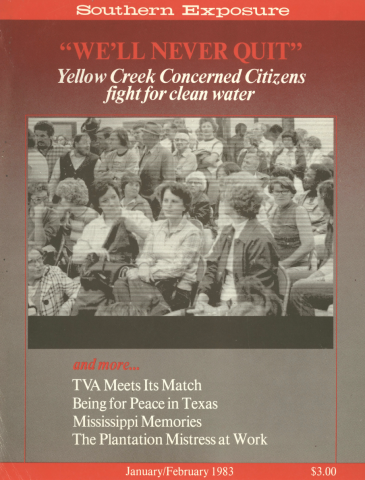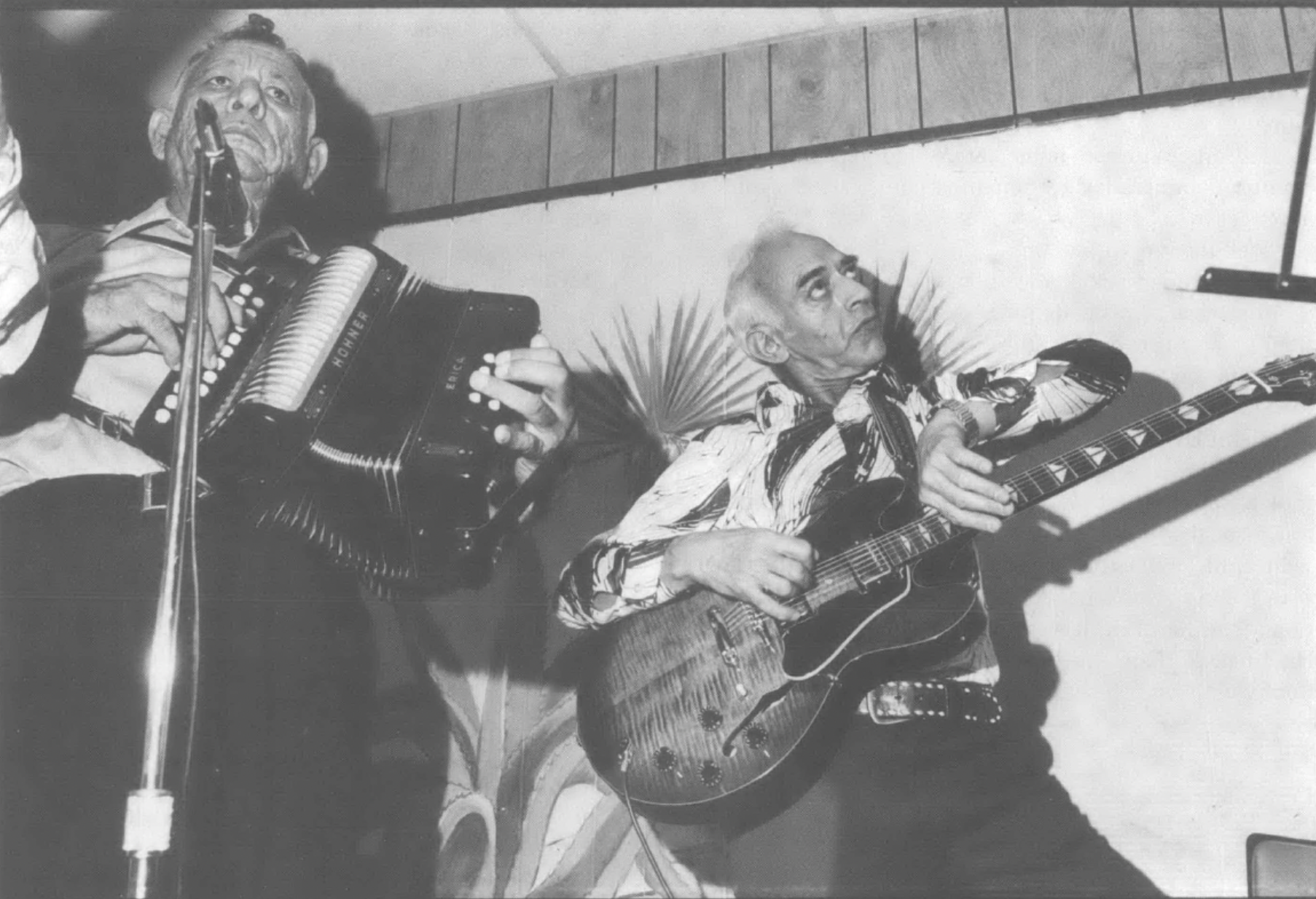
This article originally appeared in Southern Exposure Vol. 11 No. 1, "'We'll Never Quit:' Yellow Creek Concerned Citizens fight for clean water." Find more from that issue here.
Friday night in San Antonio brought a crowd to Jimmy's Restaurant and Cantina. By nine o'clock the people had cleared out of the restaurant and moved into the big back room, the cantina part of Jimmy's. It was Jimmy's birthday, and friends, family and compadres had come to help celebrate. Out came a birthday cake, and a couple dressed in elegant trajes de charro (Mexican cowboy outfits) climbed onto the small stage to make short speeches. The beer flowed freely, as did the lively talk. And, finally, couples took to the floor for the main enjoyment of the evening: dancing to the familiar polkas and rancheras (ranch songs) of Santiago Jimenez and his button accordion.
In Central and South Texas, weekends are the times for Tejanos (Texas Mexicans) to gather — in cantinas like Jimmy's or in ice houses, dance halls, outdoor fiestas or homes. La gente (the people) — middle-aged couples, young couples, los abuelos (the grandparents) and children of all ages come together to eat, drink and, especially, to dance to the Tex-Mex accordion music.
Santiago Jimenez represents the second of four generations of Jimenez family musicians who, for 80 years, have provided the music for these weekend events around San Antonio and Central Texas. The family has created and popularized La Musica Norteña, a musical style that blends nineteenth century dances like the polka and the waltz with twentieth century Latin-Caribbean rhythms, the sound of the German button accordion and a Texas-Mexican sentimiento (feeling). It's a style that Tejanos may truly call their own.
The Jimenez musical dynasty began with Patricio Jimenez who learned the button accordion from local German Texans and played for house dances in the barrios of San Antonio in the early 1900s. His son Santiago pioneered the Norteña accordion style in San Antonio by performing on radio broadcasts and recordings beginning in the early 1930s. Since the 1950s, Santiago's son, Leonardo "Flaco" (Skinny) Jimenez, has developed Musica Norteña to heights of artistic virtuosity and gained international renown. Now Flaco's teen-aged son David is continuing the tradition.
As the tradition continues for the Jimenez family so do the weekend celebrations for the Tejano community. If it is at Jimmy's cantina, Santiago pleases the crowd with his smooth, well-seasoned polkas — tunes like "La Piedrera" and "Viva Seguin'' that he made popular in his earlier days. If it is at a local dance hall, Flaco shows off his fast, flashy style in his own hit songs. He twists, bends and draws out notes to animate the crowd on the dance floor. But the feeling from place to place, father to son, is the same. The spirit of alegria (happiness) and the common bond of Texas-Mexican culture is in the music, dancing and celebrating. As couples dance away into the night and grandparents cradle sleeping grandchildren, the family and community, music and tradition are united.

